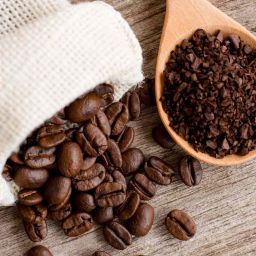
The Philippine coffee industry is a vibrant and burgeoning sector, known for its diverse range of flavors and high-quality beans that cater to both local and international palates. With the Philippines’ unique geographical and climatic conditions, the country is able to produce coffee beans with distinct flavors that are hard to find elsewhere.
The importance of choosing high-quality coffee beans cannot be overstated; it directly impacts the flavor, aroma, and overall coffee experience. High-quality beans also ensure that the coffee is produced sustainably, supporting local farmers and their communities.
Top Coffee Bean Varieties in the Philippines
Arabica
Arabica beans are the most popular coffee beans globally and in the Philippines. They are known for their smooth, slightly acidic flavor profile. The Cordillera region is particularly noted for its Arabica coffee, which is often described as having a fruity and floral taste, reflecting the rich biodiversity of the area.
Robusta
Robusta beans are valued for their strong, bold flavor and higher caffeine content. The Philippines has gained international recognition for its Robusta beans, particularly from Bukidnon, which won the “Best Robusta in the World” title at the Global Specialty Coffee Expo. These beans are known for their sweet and spicy flavor profile, with hints of chocolate and a smooth, creamy texture.
Liberica (Barako)
Liberica, or Barako, is a unique variety indigenous to the Philippines and is characterized by its distinct fruity and woody taste. Grown mainly in Batangas, this bean variety has a bold flavor and a strong aroma. It’s a traditional favorite in the Philippines, offering a taste that’s deeply rooted in the country’s coffee culture.
Excelsa
Excelsa beans, though less common, contribute to the diversity of Philippine coffee with their tart and fruity flavor profile. They are often used in blends to add complexity and a unique twist to the coffee’s taste.
Each of these varieties showcases the rich agricultural landscape of the Philippines, offering coffee enthusiasts a wide range of flavors and experiences. The regional specialties, from the Cordilleras to Batangas, highlight the country’s capability to produce beans that are not only unique but also reflective of the Philippines’ rich coffee heritage and biodiversity.
Featured Philippine Coffee Brands and Beans
Basilio
Basilio leverages air-roasting techniques to enhance the bold and rich flavors of their coffee beans, highlighting ethical sourcing and a variety of blends that cater to diverse tastes. This brand stands out for its commitment to fair trade practices and its innovative approach to coffee roasting, ensuring each bean releases its unique flavor profile.
The blends, including Dalisay, Tinatangi, and Muni-Muni, offer a range of tastes from pure Arabica to a mix with Robusta and Excelsa, catering to different preferences.
Figures of Beans
Sourced from the Cordillera region, Figures of Beans is celebrated for its organic coffee that is packed with antioxidants. This brand is known for its unique blends and flavors, such as Paradox, Oxymoron, and Metaphor, each offering a distinct taste experience. With beans harvested and roasted in the highlands, this brand embodies the essence of Philippine coffee culture, delivering a smooth and balanced cup every time.
Bukidnon Coffee
Bukidnon coffee is distinguished by its sweet and spicy flavor profile, attributed to the meticulous handpicking and sun-drying processes the beans undergo. Recognized for its smooth texture and complex flavors, including chocolate, nuts, and caramel, Bukidnon coffee is sought after for its rich, full-bodied experience. This variety demonstrates the excellence of Philippine Robusta, perfect for a variety of brewing methods.
Mt. Apo Sensational Fruity Single Origin
Curated’s Mt. Apo Sensational Fruity Single Origin coffee brings a world-class flavor from Mindanao. The medium roast, combined with the elevation of 1,500 meters, results in a coffee that offers a citrusy hint and a long-lasting savoriness. This single-origin Arabica coffee exemplifies the rich volcanic soil’s impact on flavor, providing coffee connoisseurs with a unique tasting experience.
Regional Coffee Origins
Cordillera
The Cordillera region is renowned for its Arabica coffee, which is integral to the cultural heritage of the indigenous communities. The cool climate and high elevation are ideal for Arabica cultivation, producing beans with a distinct fruity and floral flavor profile. Coffee farming in Cordillera not only supports local economies but also preserves traditional agricultural practices.
Batangas
Batangas is the home of Kapeng Barako (Liberica), a variety known for its strong aroma and flavor. Cafe de Lipa has been instrumental in reviving this traditional coffee, tracing its lineage back to the first coffee trees in the Philippines. The revival of Kapeng Barako represents not just a return to traditional flavors but also a reconnection with the rich coffee history of the region.
Bukidnon
Bukidnon’s award-winning Robusta coffee beans are celebrated for their unique flavor profiles, influenced by the region’s rich soil and favorable climate. The recognition of Bukidnon coffee on the global stage underscores the quality and potential of Philippine coffee beans. This region’s coffee is a testament to the country’s growing reputation as a producer of world-class coffee.
Iloilo
Iloilo has emerged as a key player in the Philippine coffee scene, with specialty cafes and indigenous communities contributing to the production of high-quality coffee beans. The province’s remote forests and mountains provide an ideal environment for coffee cultivation, resulting in beans with great quality and unique flavors.
The involvement of the indigenous Ati tribe in coffee production highlights the importance of community and tradition in the Philippine coffee industry.
How to Choose the Best Coffee Beans
When selecting the best coffee beans, it’s crucial to consider the bean type, roast level, and freshness. Arabica and Robusta are the two most common types, with Arabica offering a smoother taste and Robusta delivering a stronger caffeine kick. The roast level affects the flavor; light roasts retain more of the bean’s original character, while dark roasts offer a bolder, more intense flavor.
Freshness is key to capturing the bean’s essence, so look for beans roasted within the past month. Exploring flavored coffee can also introduce a unique taste experience, offering nuances that complement the bean’s natural profile.
Brewing the Perfect Cup
To fully enjoy Philippine coffee beans, matching the brewing method to the bean’s characteristics is essential. For example, Arabica beans from the Cordillera region are well-suited to pour-over methods, which highlight their delicate floral notes.
Robusta beans, with their bolder flavor, are ideal for espresso or French press, offering a richer, more robust cup. Grinding beans just before brewing maximizes freshness and flavor. Water temperature and brewing time also play crucial roles; generally, 195°F to 205°F is ideal, with brewing times adjusted based on the method to avoid over or under-extraction.
Supporting Sustainable Coffee Practices in the Philippines
Sustainable coffee practices in the Philippines, including organic farming and fair trade, are crucial for both the ecosystem and the quality of coffee. These practices ensure that coffee production supports local communities, preserves biodiversity, and maintains soil health.
Organic methods, avoiding synthetic fertilizers and pesticides, enhance the coffee’s flavor while ensuring the health of the environment. Supporting brands that adhere to these principles not only contributes to a more sustainable coffee industry but also ensures a high-quality, flavorful cup that reflects the best of the Philippines’ unique terroir.
FAQs
Which Coffee Beans Are the Best? The best coffee beans depend on personal taste preferences. In the Philippines, Arabica, Robusta, Liberica, and Excelsa each offer distinct flavors, from smooth and fruity to bold and earthy.
How Are Coffee Beans Roasted? Coffee beans are roasted at varying temperatures and times to achieve different roast levels, from light to dark. This process alters the bean’s flavor, aroma, and color, enhancing its natural qualities.
Where to Buy Coffee Beans in the Philippines? High-quality coffee beans can be purchased from local roasteries, specialty coffee shops, and online platforms. Many Philippine coffee brands offer direct sales, providing fresh beans and supporting local producers.
Conclusion
The Philippine coffee industry offers a rich tapestry of flavors, each bean telling a story of its origin, cultivation, and careful preparation. By choosing high-quality beans, employing the right brewing methods, and supporting sustainable practices, coffee enthusiasts can deeply appreciate the complexity and diversity of Philippine coffee.
Exploring local brands not only enhances your coffee experience but also supports the local economy and the environment, fostering a thriving coffee culture that spans from the highlands to your home.









